

Instructional videos for Math 3205 as hosted on YouTube are linked in the table below. Recommendation: Some of these videos are face-paced. Pause frequently and repeat; or try playing at 0.75 times normal speed (a feature in YouTube).
| Yellow rows feature content from the textbook. I may ask you questions directly about this material. | Green rows feature content not taken directly from the textbook. I won't expect you to answer questions directly on this material. But I expect you to learn this because it provides background and context which is helpful for the core material. |
|
Textbook
|
Title
|
Duration
|
Link
|
Description |
|
pp.1–4, 299–300
|
32:55 | We place the real numbers in the context of the zoo of important number systems. | ||
|
pp.32, 303
|
24:09 | Decimals are such a handy way to express real numbers... it's tempting to forget that the real number system is not defined using decimals. | ||
| pp.30, 36 | Equivalence Relations | 30:52 | 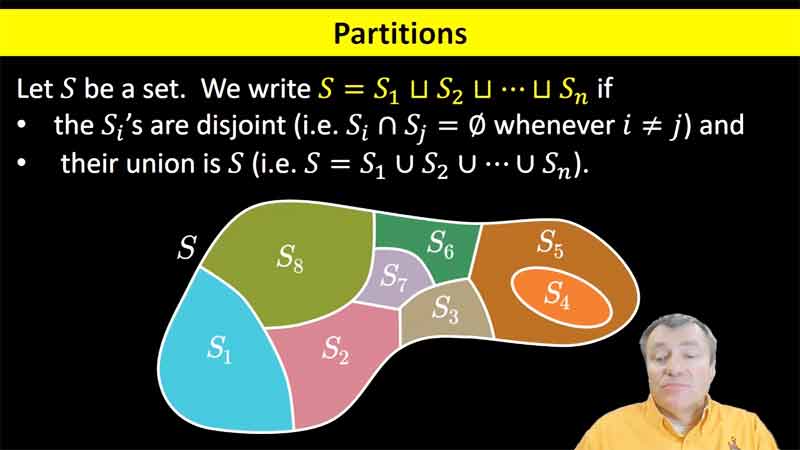 |
Equivalence relations serve as an extremely prolific tool for constructing new mathematical structures from old. |
| § | Complex Numbers | 15:27 |  |
Much can be said about properties and applications of the complex numbers. Here we highlight some ways that the complex numbers shed light on the real numbers. |
| pp.145–148 | The Hierarchy of Smoothness | 20:01 | 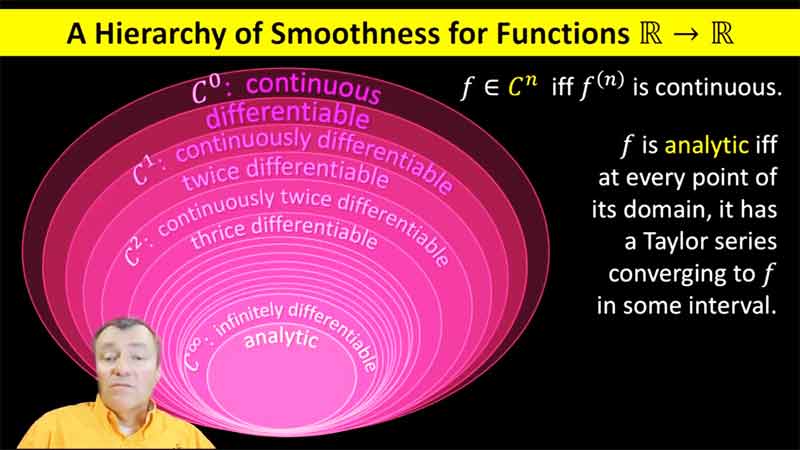 |
Functions from the reals to the reals are classified by their degree of smoothness, which is to say, how many times they can be differentiated. |
| § | Fabulous Polynomials | 12:48 |  |
This video features graphs of the first few Taylor polynomials for ex. Although the video was prepared for Calculus I students (who have not seen Taylor polynomials), the polynomials were introduced in a different way. |
| § | Polynomials and Series | 28:35 | 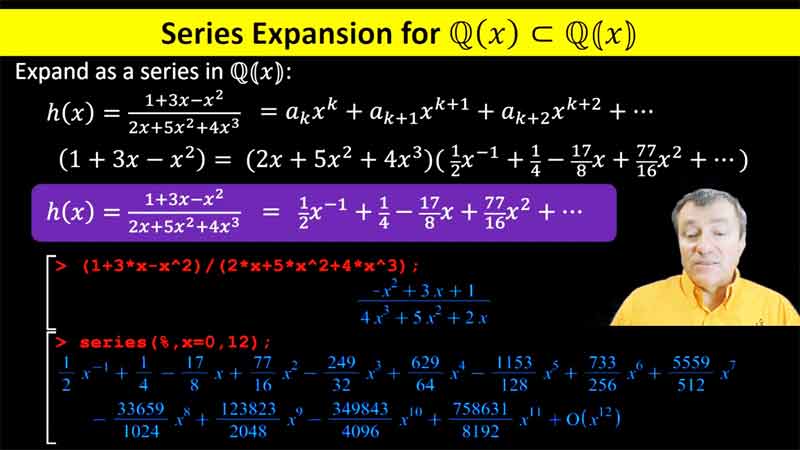 |
We introduce polynomials, rational functions, power series and Laurent series from a formal (i.e. symbolic) perspective. |
| pp.5–7 | Sets | 22:51 | 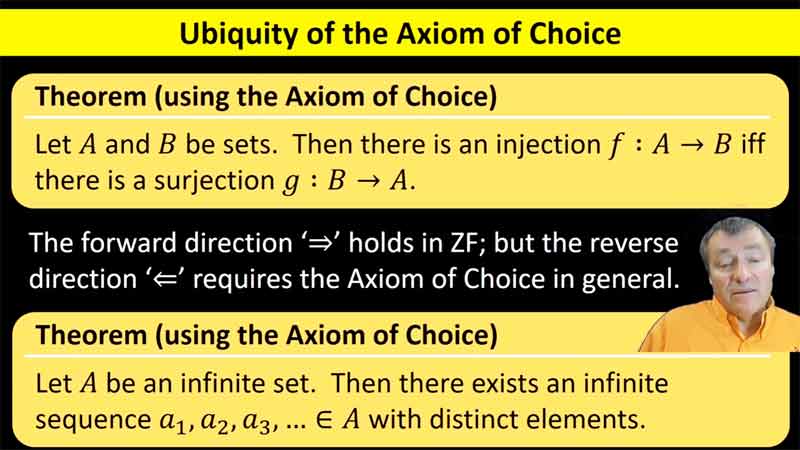 |
Russell's Paradox showed the need for axioms for set theory. Our standard axioms for modern set theory are ZF and ZFC. We don't list the axioms of ZF, but we do introduce the Axiom of Choice. |
| pp.25–32, 36–37 | Cardinality | 25:05 | 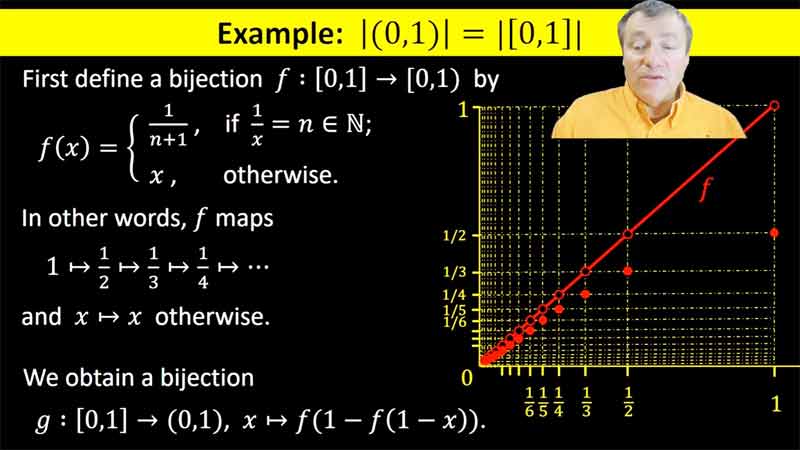 |
We discuss how an arbitrary pair of sets may be compared in size (as having the same size, or one has size greater than that of the other). In particular we discuss countability. |
| pp.32–35 | Uncountability | 38:30 | 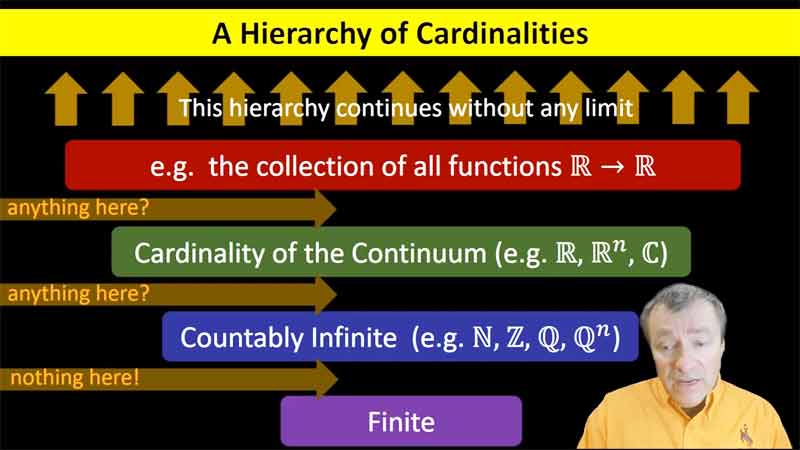 |
We present Cantor's theorems: The power set of any set is larger than the original set. In particular, the set of real numbers is uncountable. |
| pp.15–20 | Bounds | 21:47 | 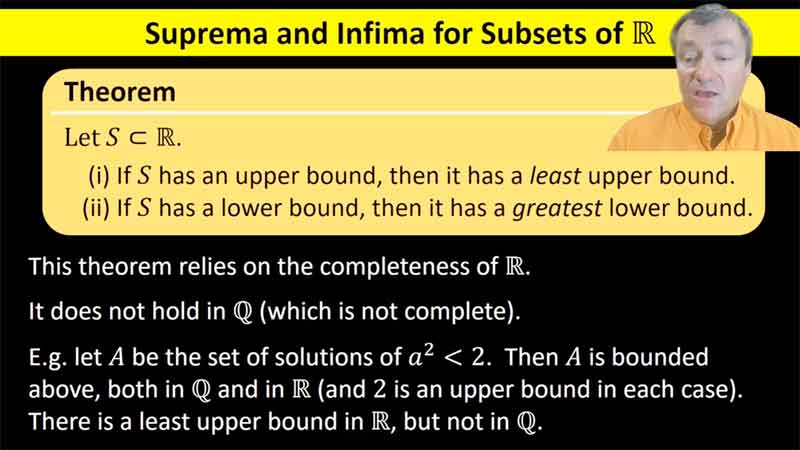 |
We talk about bounds for sets, including upper and lower bounds; also least upper bounds (suprema) and greatest lower bounds (infima). |
| Logic | 28:56 | 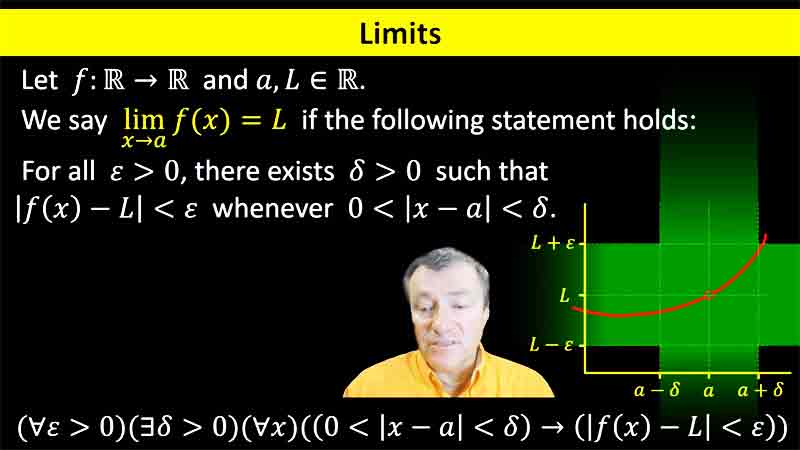 |
We discuss some of the logical language used in mathematical proofs, particularly in analysis. This includes a review of the definition of limits for univariate functions in calculus. | |
| Banach-Tarski | 12:19 | 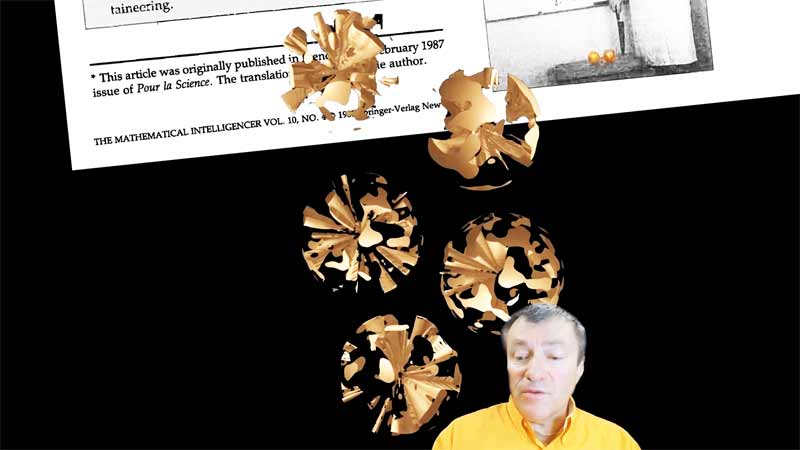 |
We describe the Banach-Tarski Theorem as a way of providing our first hint of non-measurable sets; and a further reminder of the distinction between real numbers and physical reality. | |
| pp.20–21 | Nested Intervals | 12:02 | 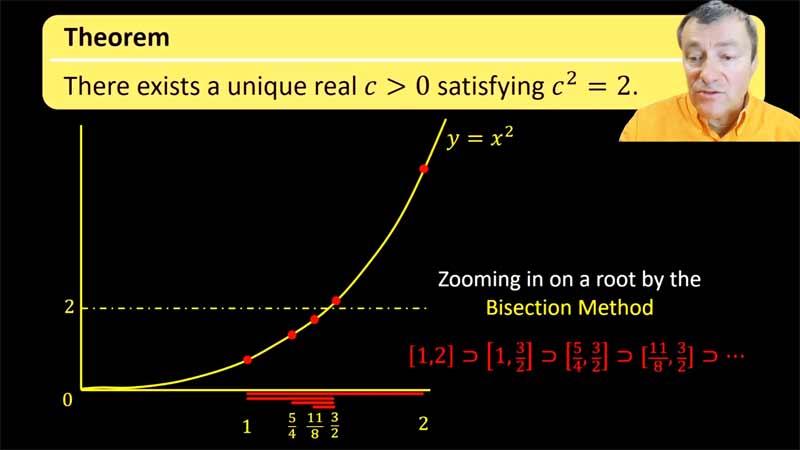 |
We prove the Nested Interval Theorem and use it to prove at 2 has a real square root. This example serves as a precursor to our later proof of the Intermediate Value Theorem. |
| pp.10–11 | Mathematical Induction | 24:08 | 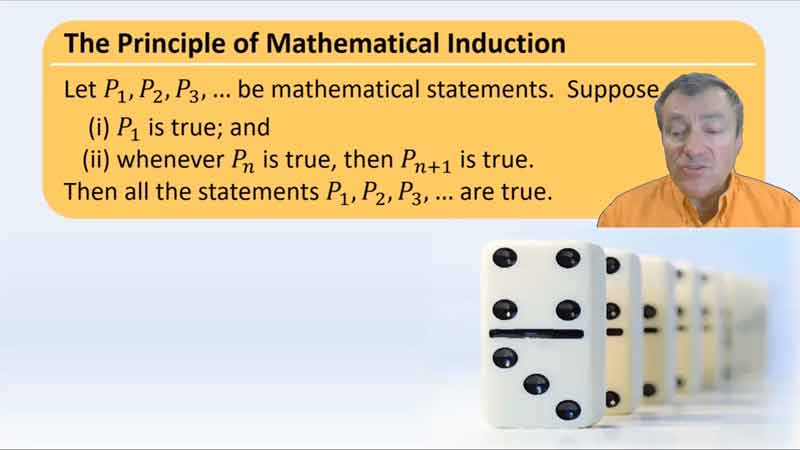 |
We introduce the Principle of Mathematical Induction, along with several examples. The Least Number Principle (the fact that the natural numbers are well ordered) is at the heart of induction. |
| Interesting Numbers | 5:25 | 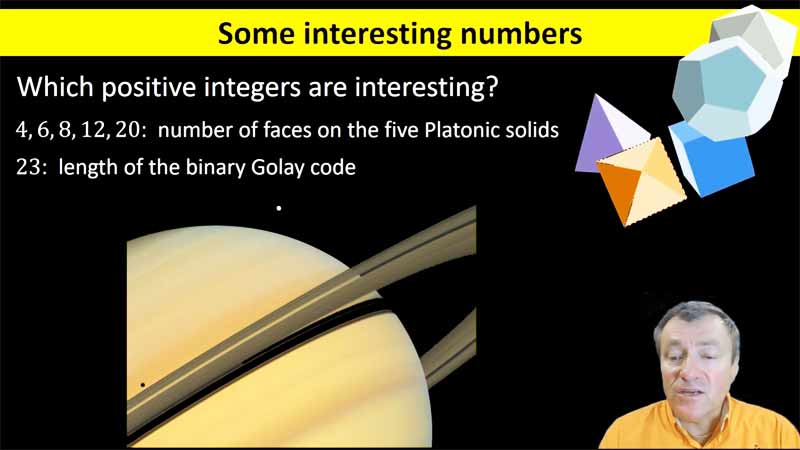 |
Which numbers are interesting? Are all numbers interesting? | |
| pp.21–22 | Q is Dense in R | 7:09 |  |
We prove the Archimedean property of the reals ('there are no infinite or infinitesimal real numbers'). We also prove that the rationals are dense in the reals. |
| pp.39–48 | Sequences | 15:45 | 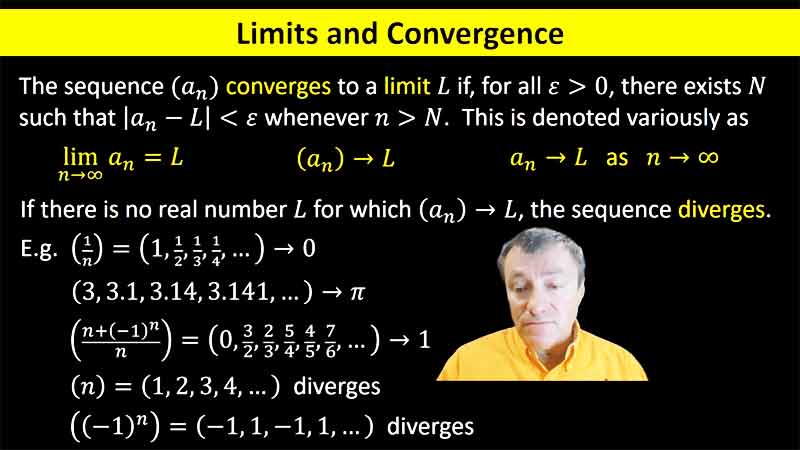 |
We discuss sequences of numbers and their properties (particularly limits, boundedness and monotonicity). The Monotone Convergence Theorem is presented, as another manifestation of the completeness of the real numbers. |
| pp.49–52 | Algebra with Sequences | 8:17 |  |
For algebraic operations on convergent sequences (term-by-term addition, multiplication and division) we prove that the resulting sequences are also convergent with limits as predicted by the familiar limit laws. |
| pp.1–4, Ex. 2.4.5 | A Discrete Dynamical System | 8:45 | 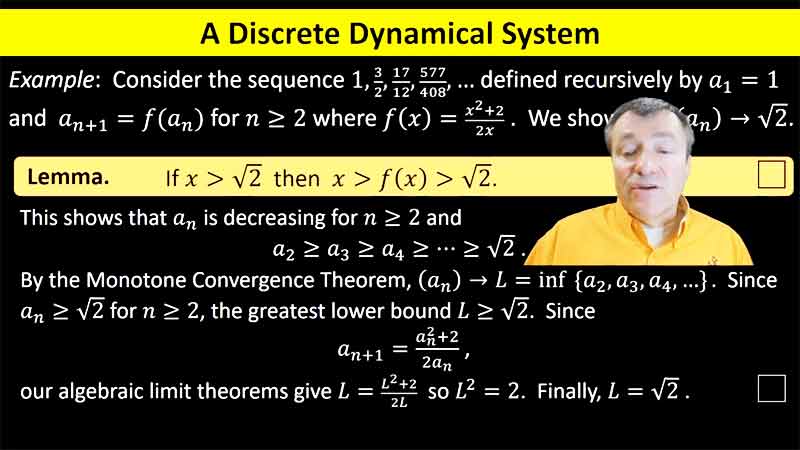 |
We consider a special instance of a recursively defined sequence whose terms are given by iterating a fixed map f. Here we obtain a sequence of rational numbers converging quadratically to sqrt(2). |
| pp.56–58 | Order with Sequences | 12:34 |  |
For convergent sequences whose terms satisfy certain inequalities, the limits also satisfy the expected inequalities. |
| pp.71–79 | Series | 23:44 |  |
We define convergence of a numerical series, and discuss the extend to which its convergence may be altered by various modifications to the series, particularly rearrangements. |
| Stacking Bricks | 14:39 |  |
As a concrete interpretation of the divergence of the harmonic series, we discuss how far a stack of bricks can be made to extend beyond the edge of a table. | |
| pp.62–66 | Subsequences | 13:09 |  |
We discuss subsequences of sequences and their properties and uses. We show how subsequences can be used to prove divergence of a sequence. We also prove the Bolzano-Weierstrass Theorem: Every bounded sequence of real numbers has a convergent subsequence. |
| pp.66–68 | Cauchy's Criterion | 23:46 | 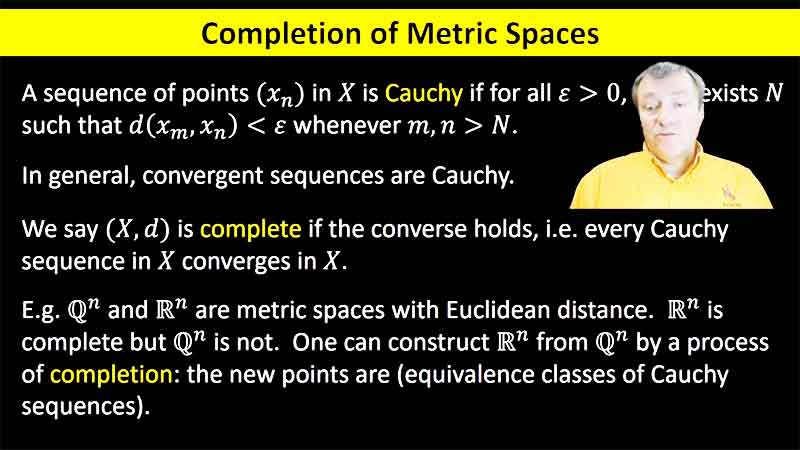 |
We discuss the notions of Cauchy sequence, metric spaces, and completeness. A metric space is a space with a reasonable notion of distance between points. The space is complete if every Cauchy sequence in the space converges. We show that that the real number system is complete. |
| pp.68–69, 297–298 | Foundations for R | 18:22 |  |
We finally give a set of axioms for the real number system: it is the unique complete ordered field in which the rationals are dense. We also compare the two most popular constructions of the reals from the rationals: either by completion in the metric space sense, or via Dedekind cuts. |
| pp.46, 63 | Divergent Series | 19:04 | 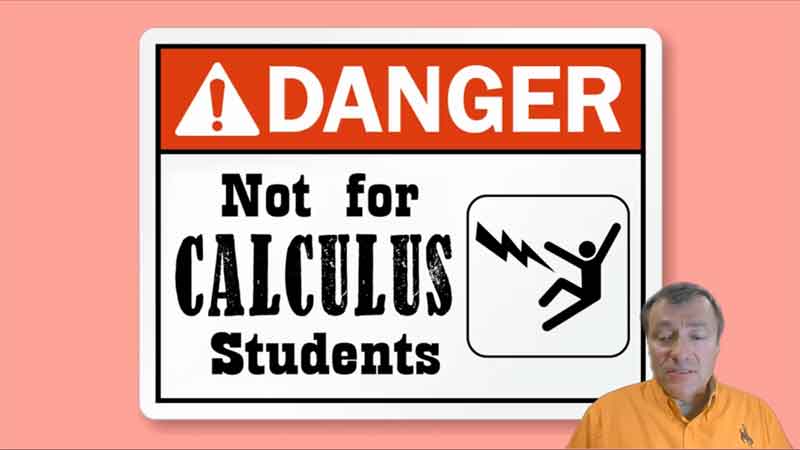 |
The controversy around Ramanujan's Summation provides us an opportunity to talk about divergent series, and whether or not they can be assigned values. This video (and its sequel) are not appropriate for students in calculus. |
| Normed Fields | 22:20 | 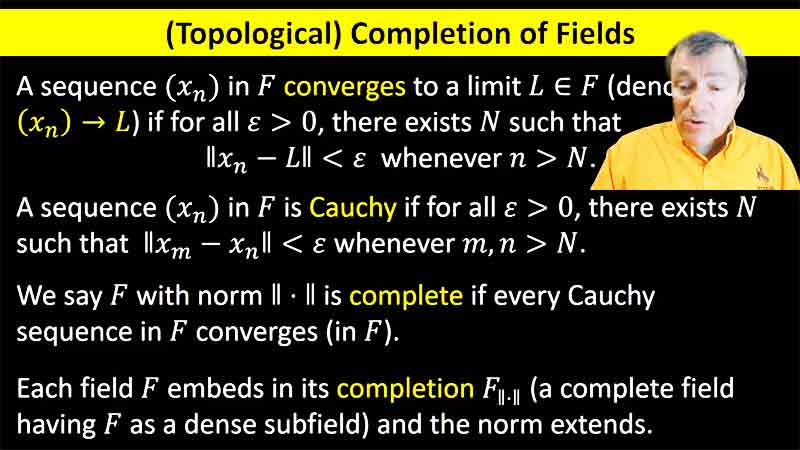 |
A hugely important theme in analysis is that of normed spaces (a special kind of metric spaces). One particular instance of this is normed fields, which we define here. Properties of sequences (including boundedness, convergence, and completeness) are generalized to this setting. | |
| pp.88–95 | Open and Closed | 17:00 | 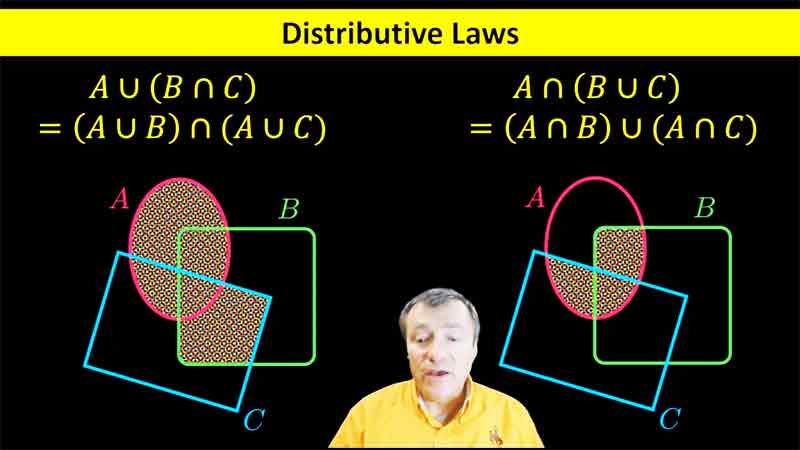 |
This is a brief introduction to the standard topology of the real number line, in which we define open and closed sets in the reals, and we give some of their most basic properties. We finish by showing that the real line is topologically connected. |
| pp.88–95, 104–106, 258 | Topology | 29:21 |  |
We define topological spaces, showing that these notions give a very short proof of the Intermediate Value Theorem. |
| pp.88–95 | Closure | 16:46 | 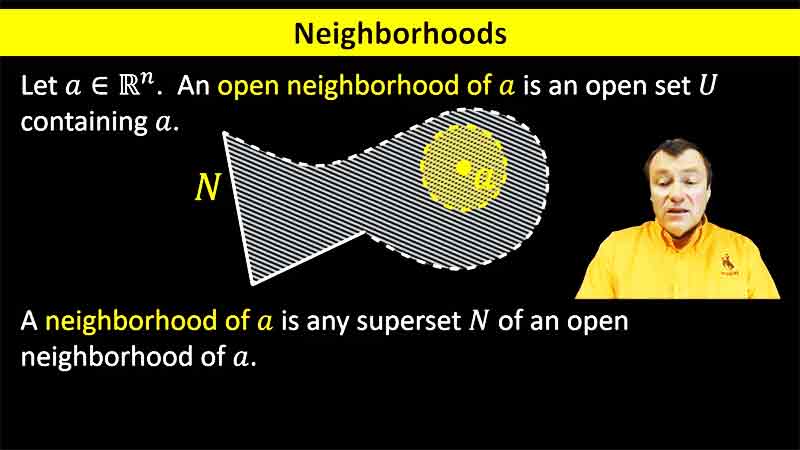 |
Several related topological notions are introduced: neighborhoods of points, limit points, and closure of point sets. |
| pp.97–99 | Compactness | 21:12 | 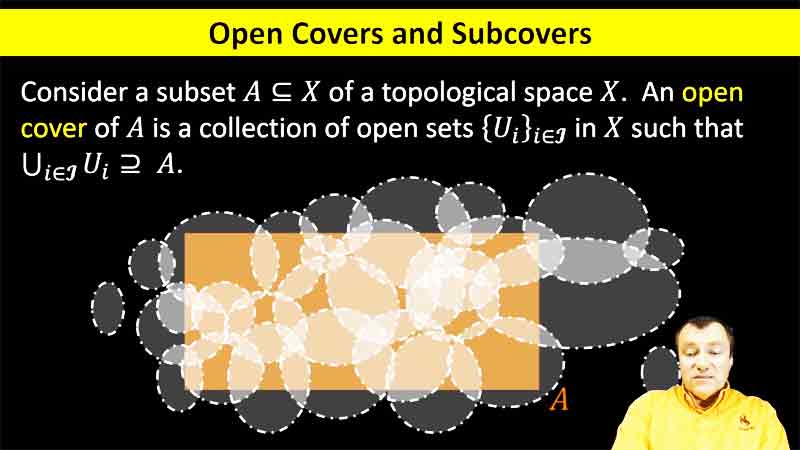 |
We define the topological property of compactness, and prove the Heine-Borel Thoerem: A subsets of the reals is compact iff it is closed and bounded. |
| pp.96–97 | Sequential Compactness | 4:31 | 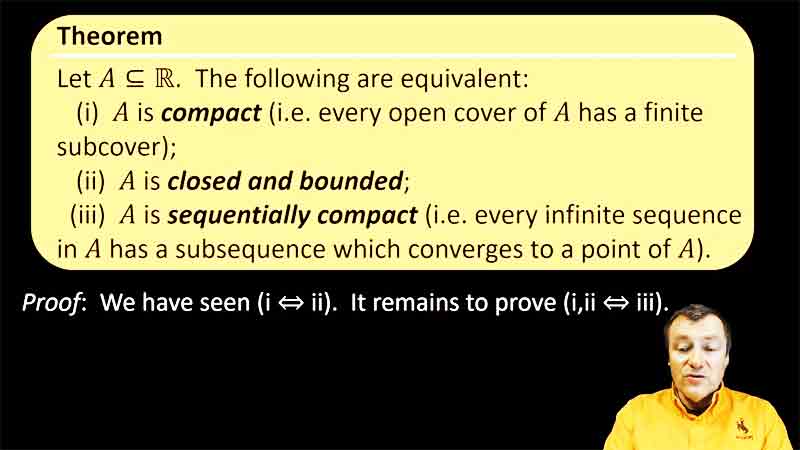 |
We show that for subsets of the real line, the property of sequential compactness (every sequence has a convergent subsequence) is equivalent to compactness. |
| pp.115–119 | Limits of Functions | |||
| O-notation | ||||
| pp.130–133 | Uniform Continuity | |||
| pp.173–178 | Uniform Convergence | |||
 / revised August, 2020
/ revised August, 2020